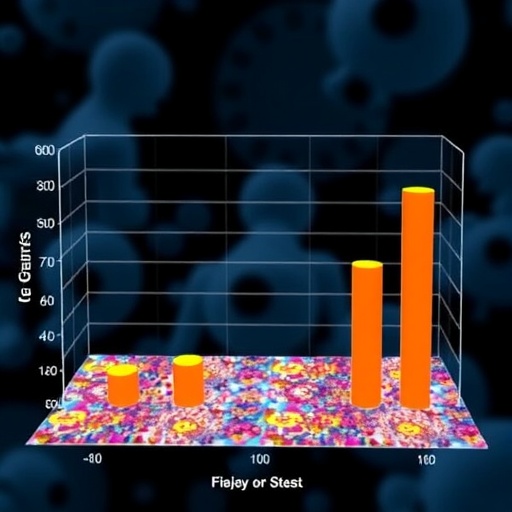Recent research exploring the prediction models for severe preeclampsia complications has unveiled significant limitations in existing assessments used within clinical settings. Preeclampsia is a serious pregnancy-related condition that can lead to severe maternal and fetal complications. A newly published study in PLOS Medicine highlights how the current PIERS models, which were initially validated for predicting risks within the first two days of hospital admission, show deteriorating efficacy over extended periods, raising concerns for ongoing patient monitoring.
Preeclampsia affects about 5-20% of women diagnosed with the condition, and timely and accurate risk assessment can make a crucial difference in maternal and fetal outcomes. The PIERS (Pre-eclampsia Integrated Estimate of RiSk) frameworks, specifically the Machine Learning variant (PIERS-ML) and the traditional logistic regression model known as fullPIERS, have been designed to stratify risk in women presenting with signs of preeclampsia upon hospital admission. However, their accuracy wanes significantly after the initial 48-hour window, a critical insight that questions the validity of their continued use in risk assessment beyond this period.
The study in question evaluated data from a substantial cohort of 8,843 women diagnosed with preeclampsia between 2003 and 2016, all assessed at a median gestational age of 36 weeks. Researchers analyzed the performance of these established prediction models in relation to clinical outcomes over time. Their findings underscore a concerning trend: neither model sustains high predictive performance for ongoing risk stratification as the pregnancy progresses beyond the 48-hour mark.
One of the key takeaways from the study is the performance of PIERS-ML, which displayed relative effectiveness in identifying both very high-risk and very low-risk groups over time. Nonetheless, the ability to accurately stratify the broader high-risk and low-risk categories significantly declined, emphasizing the critical need for predictive models that retain their efficacy throughout the course of a woman’s hospitalization for preeclampsia.
Despite the findings suggesting that clinicians may continue to leverage these models for follow-up assessments after initial admission, caution is advised. The authors of the study advocate for a reevaluation of how these prediction tools are utilized, particularly as pregnancy progresses and the risk landscape evolves. They highlight that the static nature of these models, originally designed for immediate risk estimation, leads to increasingly inaccurate predictions when used in a repetitive fashion.
In the context of medical practice, where time and accurate prognostications can determine interventions, these findings signal an urgent need for the development of more dynamic, forward-looking prediction models. The authors suggest an emphasis on incorporating transitional data and adapting criteria that reflect the changing nature of conditions like preeclampsia, which does not remain static.
The calls for more adaptable prediction models in obstetric care resonate deeply with clinicians who grapple with the complexities of managing preeclampsia. The existing reliance on these models could inadvertently foster a false sense of security, potentially leading to inadequate responses to deteriorating patient conditions beyond the initial assessment phases.
Moreover, the paper shines a light on the intricacies of predictive analytics in obstetric settings, urging a shift from conventional methodologies to innovative, machine learning-based approaches. Such advancements could augment the existing frameworks, equipping healthcare professionals with tools that evolve alongside patient conditions rather than offering static predictions that may no longer apply.
In summary, the findings of this pivotal study carry a weighty message for the medical community. As it stands, the PIERS-ML and fullPIERS models serve as reminders of the continuous evolution required within clinical prediction models. Adopting new methodologies that prioritize adaptability over static assessments may bolster maternal-fetal outcomes in the context of preeclampsia and serve as a template for similar conditions in obstetrics.
As this research outlines the need for improvement in predictive models, it raises broader questions regarding the role of technology in fostering timely and accurate decisions in healthcare. Embracing innovation in prediction could be the key to better managing not just preeclampsia but a suite of pregnancy-related complications that bear significant consequences for both mothers and infants alike.
By engaging in a critical analysis of the existing models and advocating for a shift towards more dynamic approaches, we are likely to see progressive changes that enhance clinical outcomes. As the dialogue surrounding this research continues, the integration of new methodologies into standard practice could very well redefine the landscape of obstetric care.
Shifting our perspective from conventional, static risk models to more predictive, adaptive frameworks may establish a new paradigm in managing high-risk pregnancies. This could enable clinicians to offer nuanced care that reflects the changing clinical picture rather than merely relying on assessments that lose their validity over time.
As we move forward, continued dialogue and research will inevitably play a crucial role in fostering innovations in prediction that can withstand the complexities of pregnancy, ensuring that mothers and their children receive the best possible care throughout this pivotal journey.
In conclusion, the investigation into the efficacy of existing preeclampsia prediction models marks a vital step toward enhanced patient safety and improved health outcomes. By recognizing the limitations attributed to static models and the pressing need for adaptive practices, the medical community can embark on a path toward more reliable clinical assessments that prioritize both the health of mothers and their unborn children.
Subject of Research: Prediction models for complications from preeclampsia
Article Title: Consecutive prediction of adverse maternal outcomes of preeclampsia, using the PIERS-ML and fullPIERS models: A multicountry prospective observational study
News Publication Date: February 4, 2025
Web References: PLOS Medicine
References: Yang G, Montgomery-Csobán T, Ganzevoort W, Gordijn SJ, Kavanagh K, Murray P, et al. (2025) Consecutive prediction of adverse maternal outcomes of preeclampsia, using the PIERS-ML and fullPIERS models: A multicountry prospective observational study. PLoS Med 22(2): e1004509.
Image Credits: Tünde Montgomery-Csobán (CC-BY 4.0)
Keywords: Preeclampsia, prediction models, maternal outcomes, healthcare, obstetrics, risk assessment
Tags: clinical assessment limitationsfetal health risksgestational age impacthealthcare data analysislogistic regression in obstetricsmachine learning in healthcarematernal-fetal medicineongoing patient monitoringPIERS risk assessmentpreeclampsia prediction modelspregnancy complications researchsevere maternal complications





